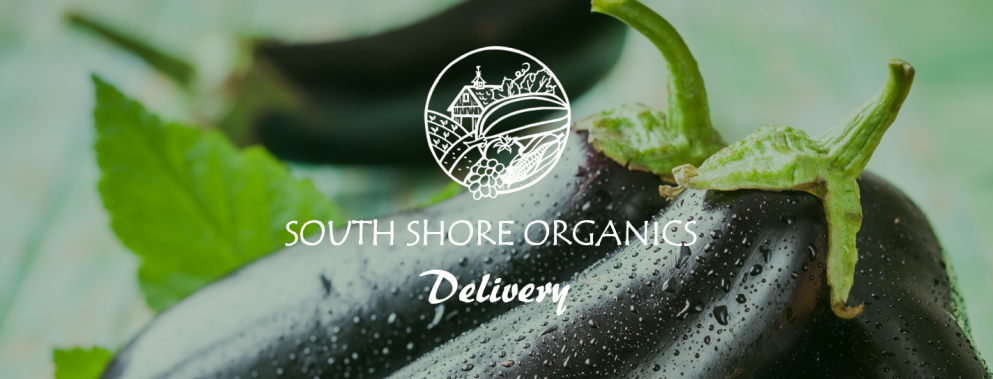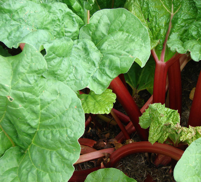I never gave much thought to Rhubarb before, it was one of those ‘olden-day’ plants from ‘yester-year’ that only my grandmother knew how to use. Well, that’s how it was in our family. Truthfully, my first introduction to rhubarb, as a grown up with a kitchen of my own, happened when I started South Shore Organics and the farmers offered it for our baskets. I took some home, tried it a few different ways, but didn’t like it. It has a tart and bitter flavor, and I didn’t understand the fuss. It was in my second year of South Shore Organics that my new year’s resolution to find a recipe I liked for every vegetable – in other words, find a way to like them all – led to some promising results.
Today, my favorite way to enjoy rhubarb is either (predictably) in a pie, or in a salsa, or in a cocktail (if you can’t smother it in bacon and cheese, well then, you may as well add it to gin or turn it into a margarita!!) Did you know, that the leaves of the rhubarb are actually poisonous? The stems are (obviously) edible, and so too, are the flowers. Rhubarb flowers have the consistency of cauliflower, with the same tart flavor of the stems.
Next interesting fact: rhubarb is not just ‘olden-day’, it’s historic. The Chinese have been using it for thousands of years, and it is thought the first traceable mention of it is in Greece from around 2700 years ago. Back then, the root, or rhizome, was traded as an herb, and fetched ‘several times the price of valuable herbs’ like saffron, cinnamon, and opium. In fact, its value can be seen in Ruy Gonzáles de Clavijo’s report of his embassy in 1403–05 to Timur in Samarkand: “The best of all merchandise coming to Samarkand was from China: especially silks, satins, musk, rubies, diamonds, pearls, and rhubarb…” – Ruy was a Castillian traveler and writer.
So, thousands of years old, and equal in value to opium, diamond, and pearls – that’s a very different beginning from where we are today. Rhubarb is under appreciated, under-utilized, and in some instances, treated as an invasive plant. I have one friend who has a rhubarb plant growing in the middle of her lawn, she has dug it up, mowed over it, and sprayed it with vinegar – and the darn thing is determined to grow big and beautiful despite her exasperation. But gardeners everywhere might have a different opinion if they knew the next funny fact . . .
Rhubarb’s are one of the few plants that boast the title ‘biodynamic accumulator’, a fancy-schmancy term for ‘pulls nitrogen out of the air and fixes it to the soil’. Nitrogen is what is in most fertilizers, it’s what most plants need to grow, and through a relationship with a bacteria in the soil, the rhubarb will make nitrogen available to other nearby plants, and as a biodynamic accumulator it is one of the few plants that actually improve soil the longer its around (even if you mow it). On a side-note, did you know that clover is also a biodynamic accumulator? And a few patches of clover in between your grass can help you eliminate your need for fertilizer completely? Okay, back to rhubarb, it also makes a great mulch (cut and drop mulching method) and does wonders for your compost. If you love to companion plant, then plant rhubarb near kale, cabbage, broccoli, and cauliflower. Beans do very well near rhubarb as well, rhubarb protects beans from some insects.
After learning a little more about this plant, I view it a little differently than I did before. Now when I sit on my deck drinking a rhubarb-gin cocktail this summer, I will feel much worldlier 😉 and I am delighted to say that I have managed to find a couple rhubarb plants for my own garden.
Resources: Wikipedia.com, Rhubarb-central.com, Biodynamic Association

